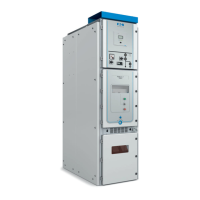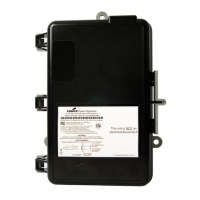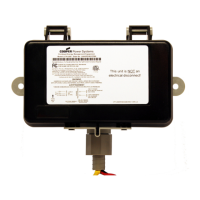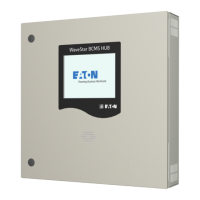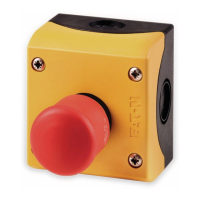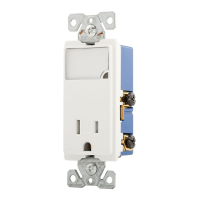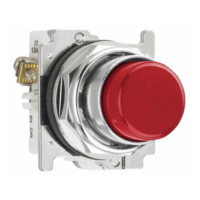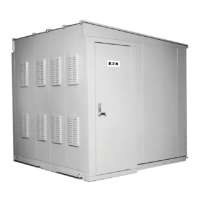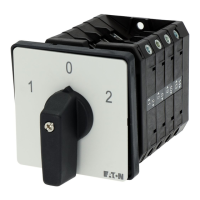KS 3-2010
Page 6
Section 4
INSPECTION PROCEDURES
4.1 General
The following inspection practices are recommended.
4.2 Exposed Surfaces Temperature Check
4.2.1 Purpose
To determine if there is excessive temperature on the external cover of a switch.
CAUTION—Severe burns can result from high temperatures. Do not hold hand or fingers in contact with
surfaces if excessive heat is felt.
4.2.2 Procedure
A switch that has been carrying its regular load for at least 3 hours just prior to inspection should be tested
by feeling the external deadfront surfaces with the palm of the hand.
4.2.3 Results
If the temperature of these surfaces does not permit you to maintain contact for at least 3 seconds, this may
be an indication of trouble and investigation is necessary. Thermographic (infrared) scanning has become a
useful method of investigating thermal performance. Further investigation may be necessary. Proceed to
4.3.
4.3 Inspection of Enclosure Interior
4.3.1 Purpose
To evaluate the operating environment, the apparent condition of the switch, that proper conductors have
been used, and if there is any visual indication that overheating has occurred.
4.3.2 Procedure
WARNING—Follow all safety procedures described in Section 2.
4.3.2.1 After being properly isolated, verify that the switch has been properly applied within its marked
ratings. If the switch has not been applied within its ratings, it should be replaced with a switch
suitable for the application.
4.3.2.2 Examine the switch surfaces for the presence of dust, dirt, soot, grease, or moisture. If such
contamination is found, the surfaces should be cleaned. Refer to
5.2.2.1 for cleaning and
precautionary instructions.
4.3.2.3 Examine the switch bases for cracks. The integrity of the base is important in withstanding the
stresses imposed during operation. Switches should be replaced if cracks are found.
4.3.2.4 Verify that the conductors are of the correct size and type for the application. Visually check all
electrical connections to the switch to be certain that such connections are clean and secure.
Loose or contaminated connections increase electrical resistance, which can damage insulation
and conductors and interfere with proper switch operation. Increased electrical resistance
causes overheating of a connection. Such overheating is indicated by discoloration or cracks of
the switch bases, discoloration or flaking of external metal parts, or melting or blistering of
adjacent wire insulation. Pitting or melting of connection surfaces is a sign of arcing due to a
loose or otherwise poor connection. (See Figures 1 and 2.)
© Copyright 2010 by the National Electrical Manufacturers Association.

